
The Chain Bridge (Kettensteg) is one of the bridges over the Pegnitz River in the historical center of Nuremberg.
This bridge is also called a suspension bridge.
This narrow 68-meter pedestrian bridge is the oldest surviving iron suspension bridge in continental Europe.
The chain bridge was designed and built by engineer Konrad Georg Kuppler. The bridge was opened on December 30, 1824 and replaced a wooden walkway. During the history of the bridge has been subjected to repeated restoration and repair work.
Today, the Chain Bridge is a monument to the history of technology of the city and part of the tourist route "Historical Mile of Nuremberg" (Historische Meile Nürnberg).
The bridge has two spans, an iron main structure and a wooden base for movement.
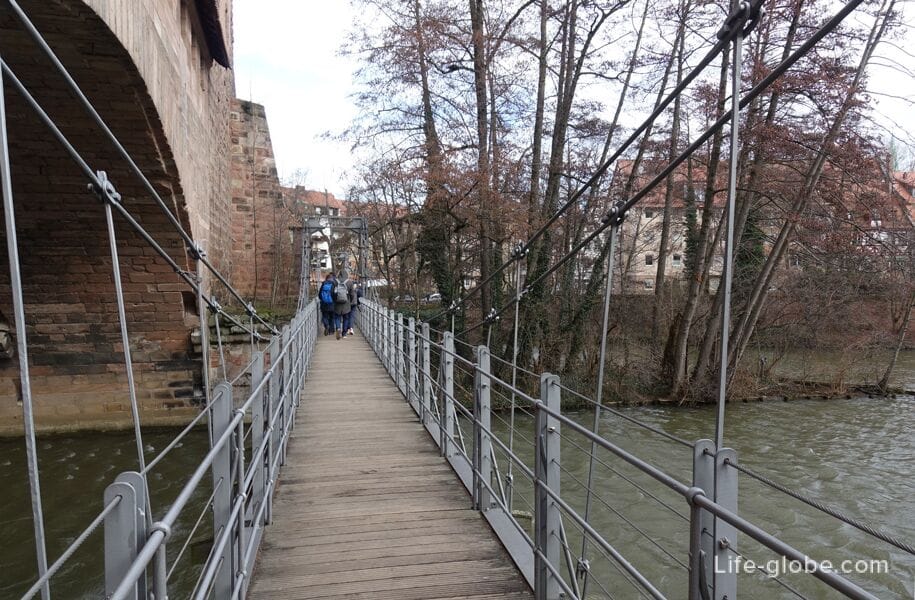

View from the chain bridge in the western direction - the river and the Hallerton Bridge are visible (Hallertorbrücke / Hallertorbrücke).
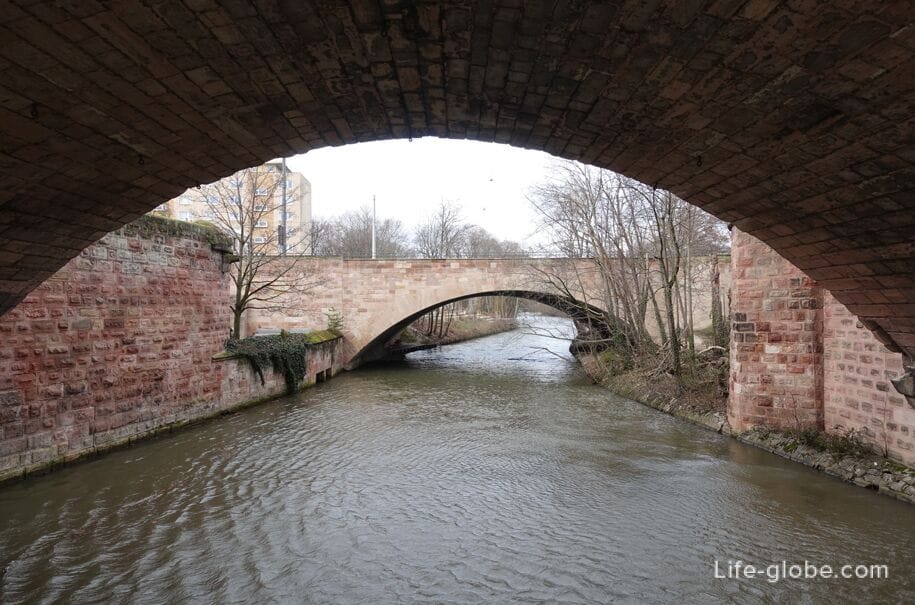
The chain bridge is located on the western outskirts of the old city of Nuremberg. It runs across the river at the last Nuremberg city fortifications, together with which it forms a single ensemble:
- Fronveste (Fronveste) - a one-story block building made of sandstone, which was erected in 1490 in the form of a bridge on a support with a gable roof, and was used as an arsenal.
In the 19th century, the building was used as a prison, hence the current name. In 1938 it was converted into a nursing home and destroyed during the Second World War. It was reconstructed in 1957.
Fronvest, a Chain bridge is visible behind it. View from the west of the river
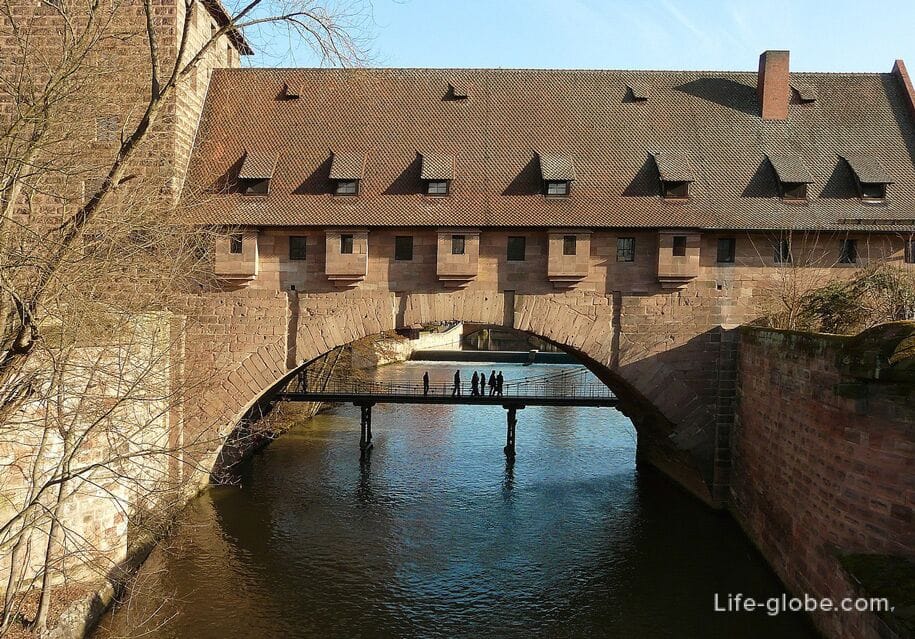
- on the north side, the fronvest adjoins the Schlayer Tower (Schlayerturm), which connects to the city wall and stands in the middle of the mouth of the Pegnitz River on a small river island.
A powerful square tower was built to protect the outflow of the river in 1419-1422 from sandstone with a pointed octagonal hipped roof.
In 1519, weaknesses in the foundation were discovered and the height of the tower was reduced.
The tower was badly damaged during the Second World War. After it was restored with the addition of the original height.
On the north side of the tower adjoins the former bridge over the northern arm of Pegnitsa, which was built at the end of the 15th century as a massive pedestrian walkway made of sandstone blocks with a gable roof.
View from the Maximilian Bridge (Maxbrücke) - on the Pegnitz River, Chain Bridge, Fronvest (right), Schleyer Tower (center), the former bridge at the tower (right)
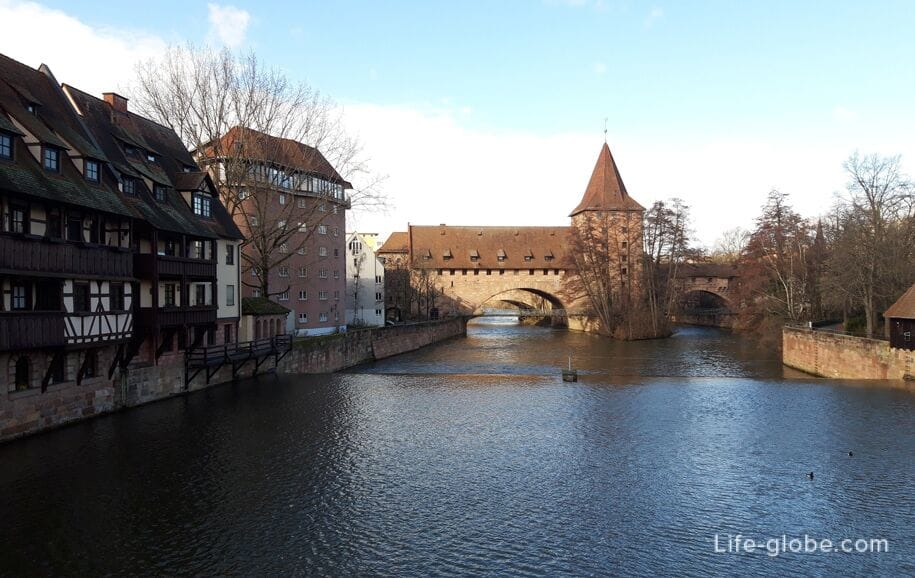
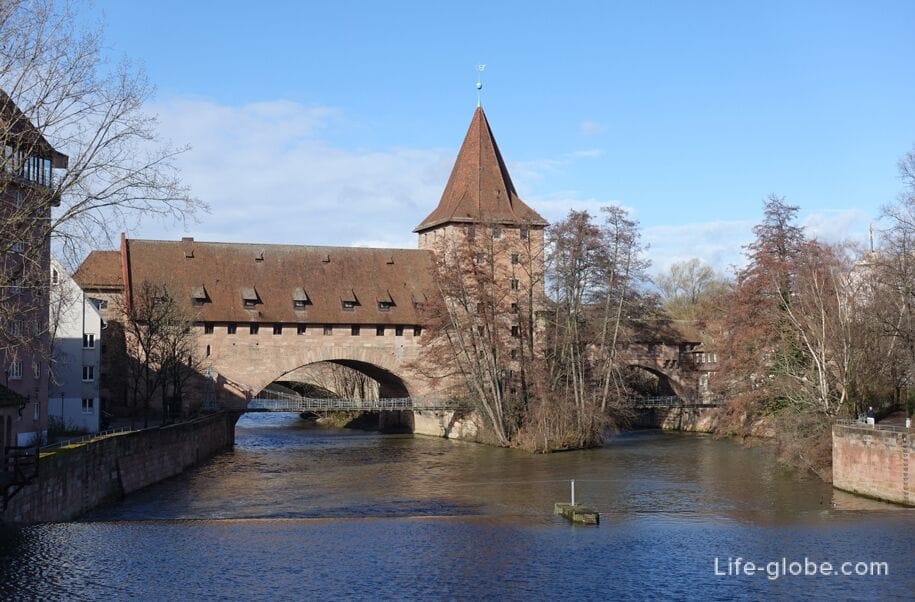
View from the south bank of the Pegnitz river
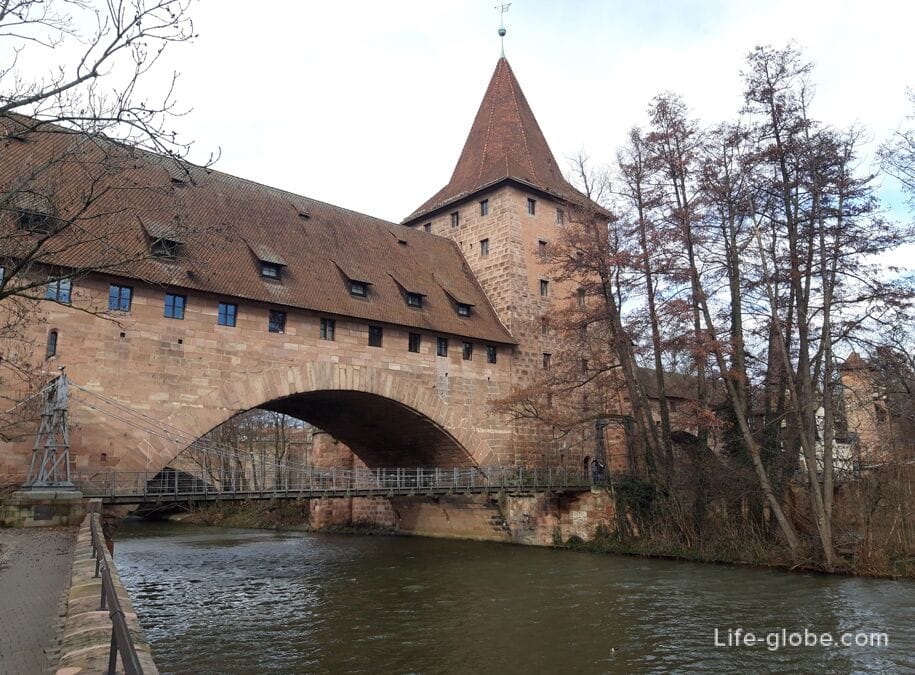
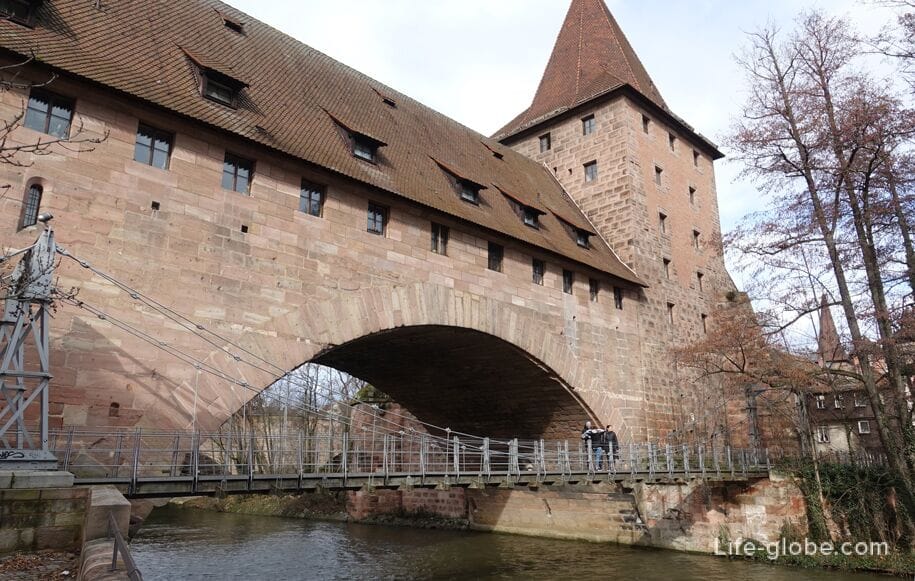
In the north direction, a chain bridge leads to the former city wall with a thin pointed tower, in which there is a small pedestrian Haller gate (Hallertürlein).
This section of the city fortifications acquired its current appearance after repairs in 1519.
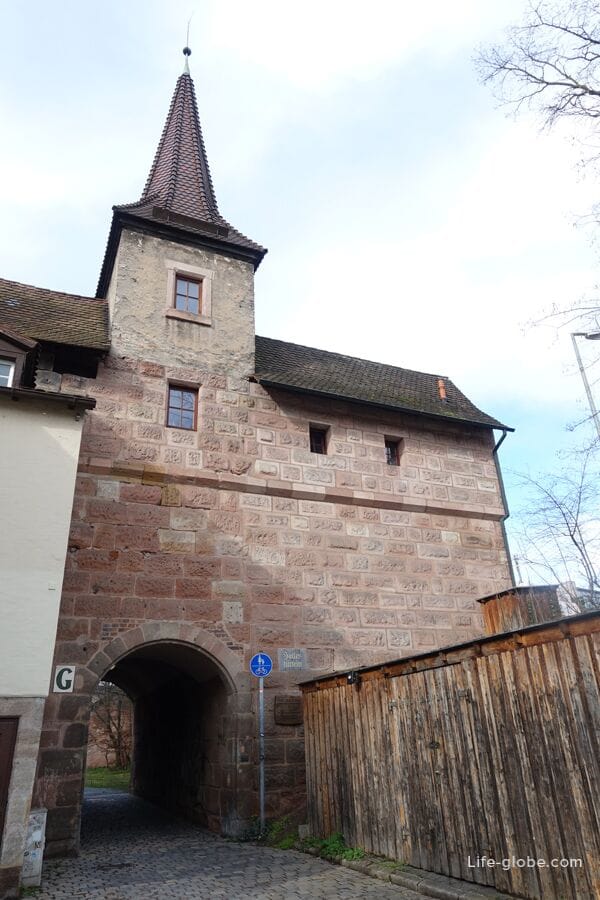
Near the Haller Gate and the chain bridge there is a restaurant "Elke's Bierstadl im Kettensteg" with a small beer garden that complements the entire ensemble of buildings.
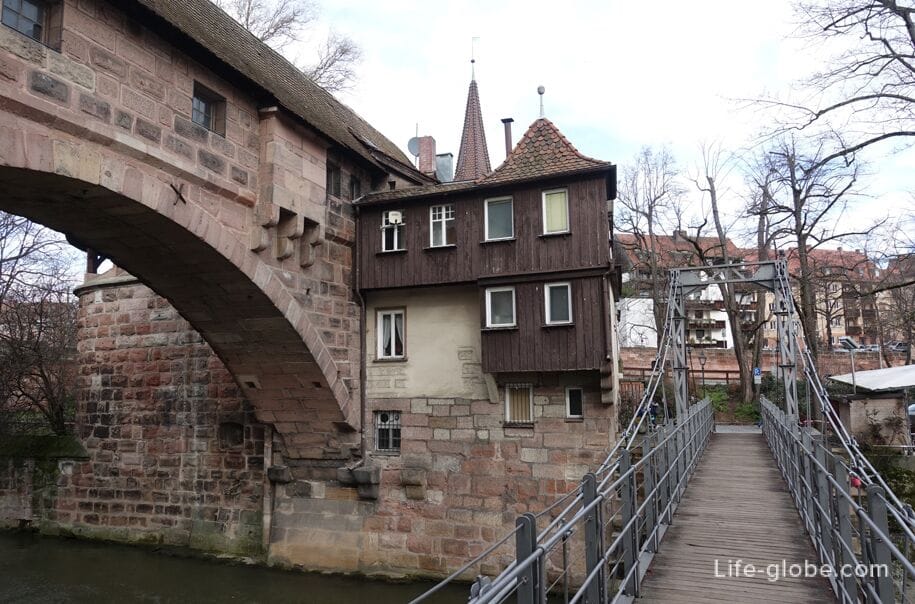

View from the northeast of the former defensive site of Nuremberg
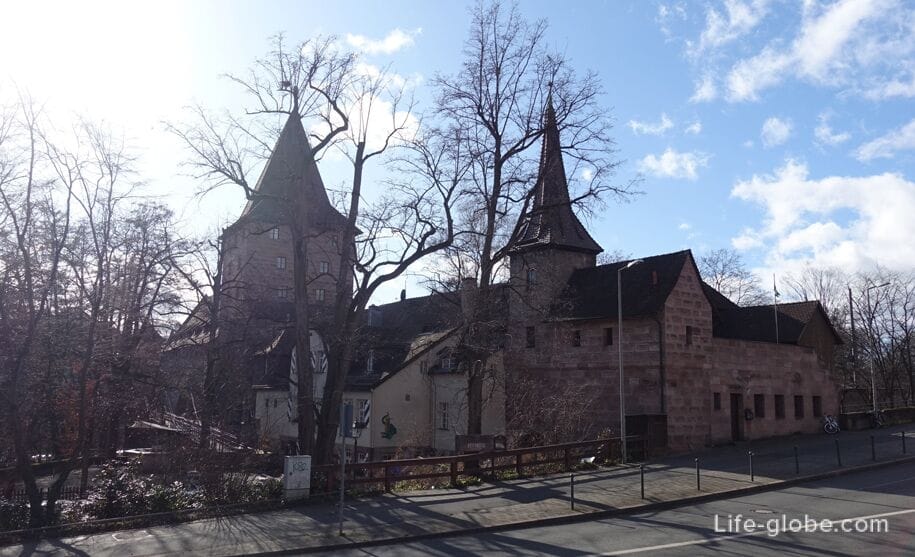
All accommodation facilities in Nuremberg, including in the city center and near the chain bridge ensemble, can be viewed and booked here